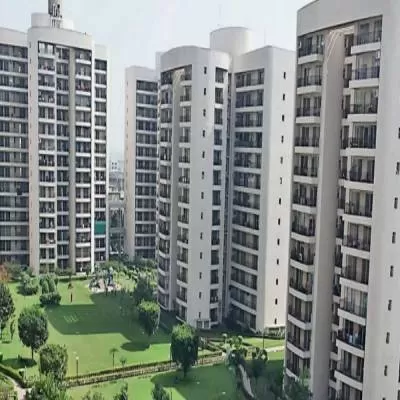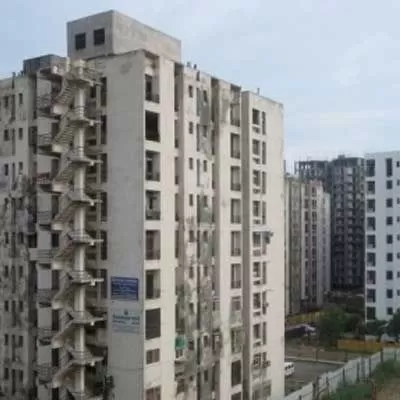- Home
- Real Estate
- Urbanisation to generate investment in infrastructure to the tune of $20 trillion by 2040
Urbanisation to generate investment in infrastructure to the tune of $20 trillion by 2040
- Need to develop manpower capability, build correctly at the outset and have the know-how to maintain what is built: Government official.
- Paradigm shift towards finding solutions and achieving time-lines no matter what the challenges: Niranjan Hiranandani.
Ashish Kumar Singh, Principal Secretary, Public Works Department (PWD), Government of Maharashtra, speaking at the Confederation of Indian Industry (CII) Conference on Infrastructure Project Management, in association with CBRE, highlighted the challenges faced by the government in executing infrastructure projects particularly the need for a pool of contractors who are supported by a team of skilled personnel who can deliver world class projects. He emphasised that by 2040, more than 70 per cent of the population will move to urban areas and that will require investment to the tune of $20 trillion to create infrastructure for this population.
PWD deals with horizontal infrastructure mainly roads and bridges. The bridge on Eastern Express Highway is a quadricon structure built in 1995 and has developed multiple stresses. However, in spite of being examined by multiple authorities on the subject no one has been able to ascertain the cause of the fractures as they are not the areas of maximum load.
Singh reiterated that we need to develop manpower capability since it is not only important to build correctly at the outset both in respect of design and technology but maintenance is equally critical. “The infrastructure sector represents a huge opportunity. It is estimated that in the US an investment of $3.6 trillion will be required till 2020 to just keep the current infrastructure going. So we can only imagine the quantum of investment and skill that will be required to maintain not only the existing 90,000 km of roadway but also the additional 13,000 km of National Highway and 10,000 km of state highways that will be built in the next four to five years in Maharashtra,” he added.
Niranjan Hiranandani, Co-founder and Managing Director, Hiranandani Group, started by highlighting the phenomenal task of restoring the Asiatic Library that was undertaken and executed successfully by the PWD, one of the iconic restoration initiatives undertaken in the country.
He emphasised that it is important not to judge time-lines by historical data as the scenario has changed from the past view of project management. “There is a paradigm shift towards finding solutions and achieving time-lines no matter what the challenges. The important point here is to make things happen. He gave the example of a 16-storied building that the Hiranandani Group constructed in the Gandhinagar SEZ in the space of a record 12 months including procuring the required approval from RBI and SEBI since it was to house an International Financial Centre and International Stock Exchange. The governments are working faster and more efficiently and the view of project management has moved from taking estimates from engineers to top down, where one takes control of the time-lines and simply solves impediments in making it happen.”
Sanjay Sethi, CEO, Maharashtra Industrial Development Corporation (MIDC), emphasised the need to consider the whole value chain and the move towards integrated land use and transport planning since the growth in one sector cannot preclude the other. In this context, he highlighted Integrated Industrial Areas where under the new policy, land will be dedicated to industry (60 per cent), housing (30 per cent) and commercial development (10 per cent).
Rishi Kumar Bagla, Chairman, CII Maharashtra State Council and Director, OMR Bagla Group, highlighted the one takeaway from the inaugural session, ie the necessity of skilling and the requirement of skilled personnel that will enable the Prime Minister’s Make in India vision move towards becoming a reality.
Gurjot Bhatia, Managing Director, Project Management Group, CBRE South Asia, highlighted “The various reforms such as the GST, clearance for REITs, relaxed foreign investment norms in the real estate sector, and the implementation of RERA work towards enabling ease of doing business in the country, while supporting corporate entities entering or expanding their footprint across leading cities in India. Overall, the outlook for India’s real estate sector remains positive. We can expect more capital inflows into the segment in the year 2017, providing a stronger thrust to the sector. Having said that, India will continue to retain its position as a bright spot in the global economy, with better growth prospects expected to support commercial space leasing in 2017,” said Bhatia.
Need to develop manpower capability, build correctly at the outset and have the know-how to maintain what is built: Government official. Paradigm shift towards finding solutions and achieving time-lines no matter what the challenges: Niranjan Hiranandani. Ashish Kumar Singh, Principal Secretary, Public Works Department (PWD), Government of Maharashtra, speaking at the Confederation of Indian Industry (CII) Conference on Infrastructure Project Management, in association with CBRE, highlighted the challenges faced by the government in executing infrastructure projects particularly the need for a pool of contractors who are supported by a team of skilled personnel who can deliver world class projects. He emphasised that by 2040, more than 70 per cent of the population will move to urban areas and that will require investment to the tune of $20 trillion to create infrastructure for this population. PWD deals with horizontal infrastructure mainly roads and bridges. The bridge on Eastern Express Highway is a quadricon structure built in 1995 and has developed multiple stresses. However, in spite of being examined by multiple authorities on the subject no one has been able to ascertain the cause of the fractures as they are not the areas of maximum load. Singh reiterated that we need to develop manpower capability since it is not only important to build correctly at the outset both in respect of design and technology but maintenance is equally critical. “The infrastructure sector represents a huge opportunity. It is estimated that in the US an investment of $3.6 trillion will be required till 2020 to just keep the current infrastructure going. So we can only imagine the quantum of investment and skill that will be required to maintain not only the existing 90,000 km of roadway but also the additional 13,000 km of National Highway and 10,000 km of state highways that will be built in the next four to five years in Maharashtra,” he added. Niranjan Hiranandani, Co-founder and Managing Director, Hiranandani Group, started by highlighting the phenomenal task of restoring the Asiatic Library that was undertaken and executed successfully by the PWD, one of the iconic restoration initiatives undertaken in the country. He emphasised that it is important not to judge time-lines by historical data as the scenario has changed from the past view of project management. “There is a paradigm shift towards finding solutions and achieving time-lines no matter what the challenges. The important point here is to make things happen. He gave the example of a 16-storied building that the Hiranandani Group constructed in the Gandhinagar SEZ in the space of a record 12 months including procuring the required approval from RBI and SEBI since it was to house an International Financial Centre and International Stock Exchange. The governments are working faster and more efficiently and the view of project management has moved from taking estimates from engineers to top down, where one takes control of the time-lines and simply solves impediments in making it happen.” Sanjay Sethi, CEO, Maharashtra Industrial Development Corporation (MIDC), emphasised the need to consider the whole value chain and the move towards integrated land use and transport planning since the growth in one sector cannot preclude the other. In this context, he highlighted Integrated Industrial Areas where under the new policy, land will be dedicated to industry (60 per cent), housing (30 per cent) and commercial development (10 per cent). Rishi Kumar Bagla, Chairman, CII Maharashtra State Council and Director, OMR Bagla Group, highlighted the one takeaway from the inaugural session, ie the necessity of skilling and the requirement of skilled personnel that will enable the Prime Minister’s Make in India vision move towards becoming a reality. Gurjot Bhatia, Managing Director, Project Management Group, CBRE South Asia, highlighted “The various reforms such as the GST, clearance for REITs, relaxed foreign investment norms in the real estate sector, and the implementation of RERA work towards enabling ease of doing business in the country, while supporting corporate entities entering or expanding their footprint across leading cities in India. Overall, the outlook for India’s real estate sector remains positive. We can expect more capital inflows into the segment in the year 2017, providing a stronger thrust to the sector. Having said that, India will continue to retain its position as a bright spot in the global economy, with better growth prospects expected to support commercial space leasing in 2017,” said Bhatia.




















